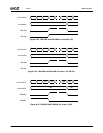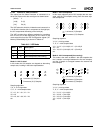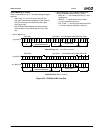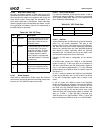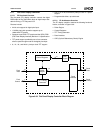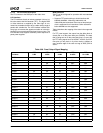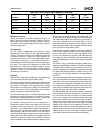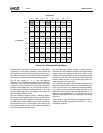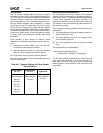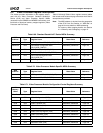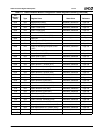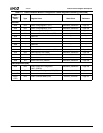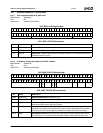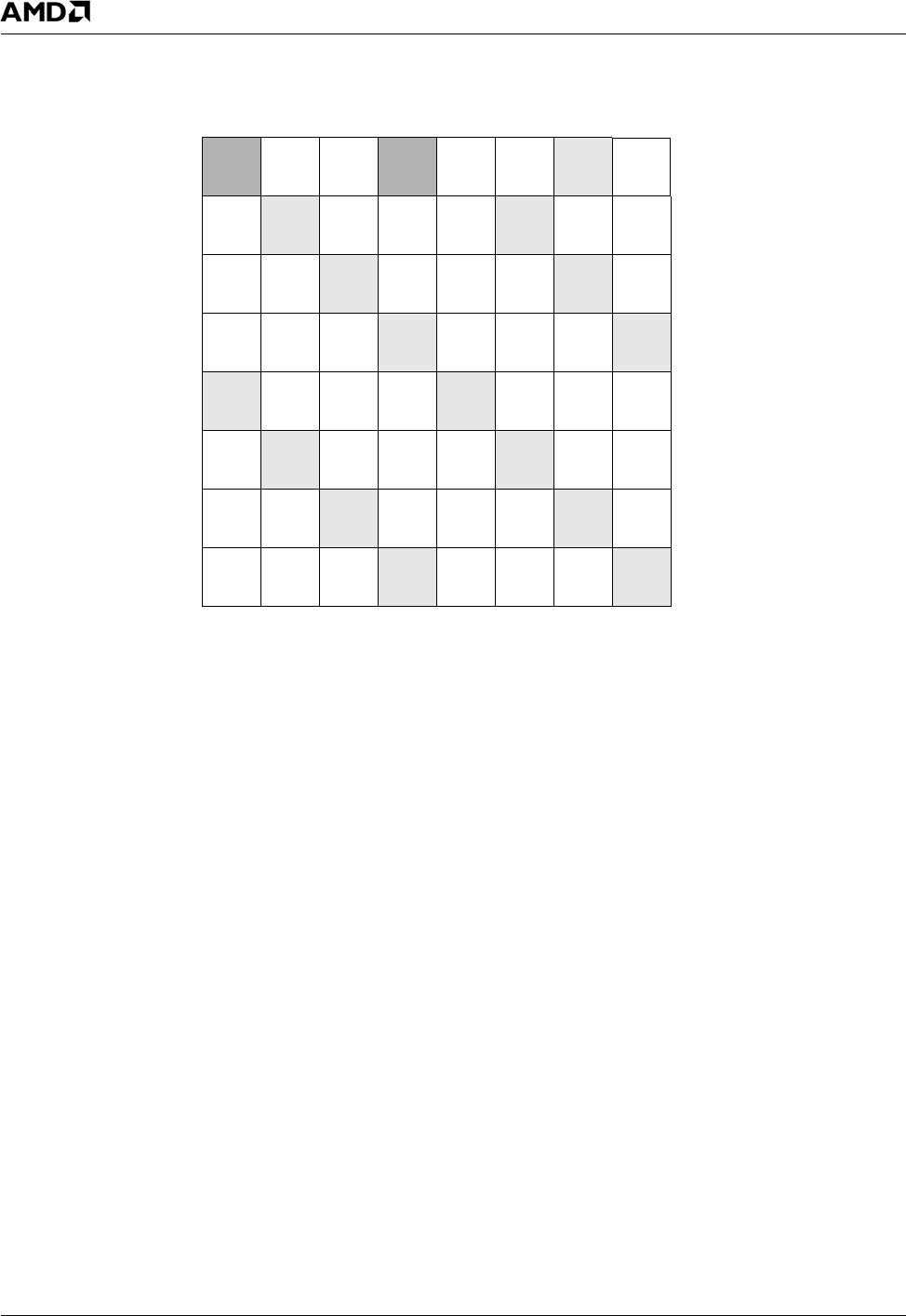
408 AMD Geode™ LX Processors Data Book
Video Processor
33234H
Figure 6-37. Dithered 8x8 Pixel Pattern
All discussions to this point have referred to a 6-bit dither-
ing scheme. A 6-bit dithering scheme is one in which the
least significant six bits of the input intensity value for each
pixel color component are truncated and these least signifi-
cant six bits are used to select an 8x8 dithering pattern.
The FP also supports 4-, 3-, 2-, and 1-bit dithering
schemes. In the 4-bit dithering scheme, only the least sig-
nificant four bits of the input intensity value for each color
component are truncated. As the value of the least signifi-
cant four bits increases from 0 to 15, the order in which 1s
are added to the dithering is much the same as in a 6-bit
scheme except that two 1s are added to the pattern for
each increment of the 4-bit value.
The 3-bit dithering scheme selects a dithering pattern
based on the least significant three bits of the input inten-
sity value for each color component. The order in which 1s
are added to the dithering pattern as the value of these two
bits increases from 0 to 7 is the same as the order for the
6-bit scheme except that two 1s are added to the pattern
for each increment of the 3-bit value.
The 2-bit dithering scheme selects a dithering pattern
based on the least significant two bits of the input intensity
value for each color component. The order in which 1s are
added to the dithering pattern as the value of these two bits
increases from 0 to 3 is the same as the order for the 6-bit
scheme except that four 1s are added to the pattern for
each increment of the 2-bit value.
The 1-bit dithering scheme uses the least significant bit of
the input intensity value to select one of two dithering pat-
terns. The order that 1s are added to the dithering pattern
is the same as the 6-bit scheme except that eight 1s are
added to the pattern when the least significant bit is a 1.
When the least significant bit is 0, the pattern is all 0s.
When the least significant bit is 1, the pattern is alternating
0s and 1s.
Figure 6-38 on page 409 shows the suggested order for
adding 1s to the dithering patterns for the 4-, 3-, 2-, and 1-
bit dithering schemes.
X-Count[3:0]
Y-Count[3:0]
10000000
10000000
01000000
01000000
01000000
01000000
10000000
0100000001000000
01000000
01000000
01000000
10000000
10000000
01000000
01000000
000 001 010 011 100 101 110 111
000
001
010
011
100
101
110
111
10000000
10000000
01000000
01000000
01000000
01000000
01000000
0100000001000000
01000000
01000000
01000000
10000000
10000000
01000000
01000000
01000000
10000000
01000000
01000000
01000000 01000000
01000000
01000000
01000000
10000000
10000000
10000000
01000000
01000000
10000000
10000000
01000000
01000000
01000000
01000000
0100000001000000
01000000
01000000
10000000
10000000
01000000
01000000
0100000001000000
01000000
01000000



